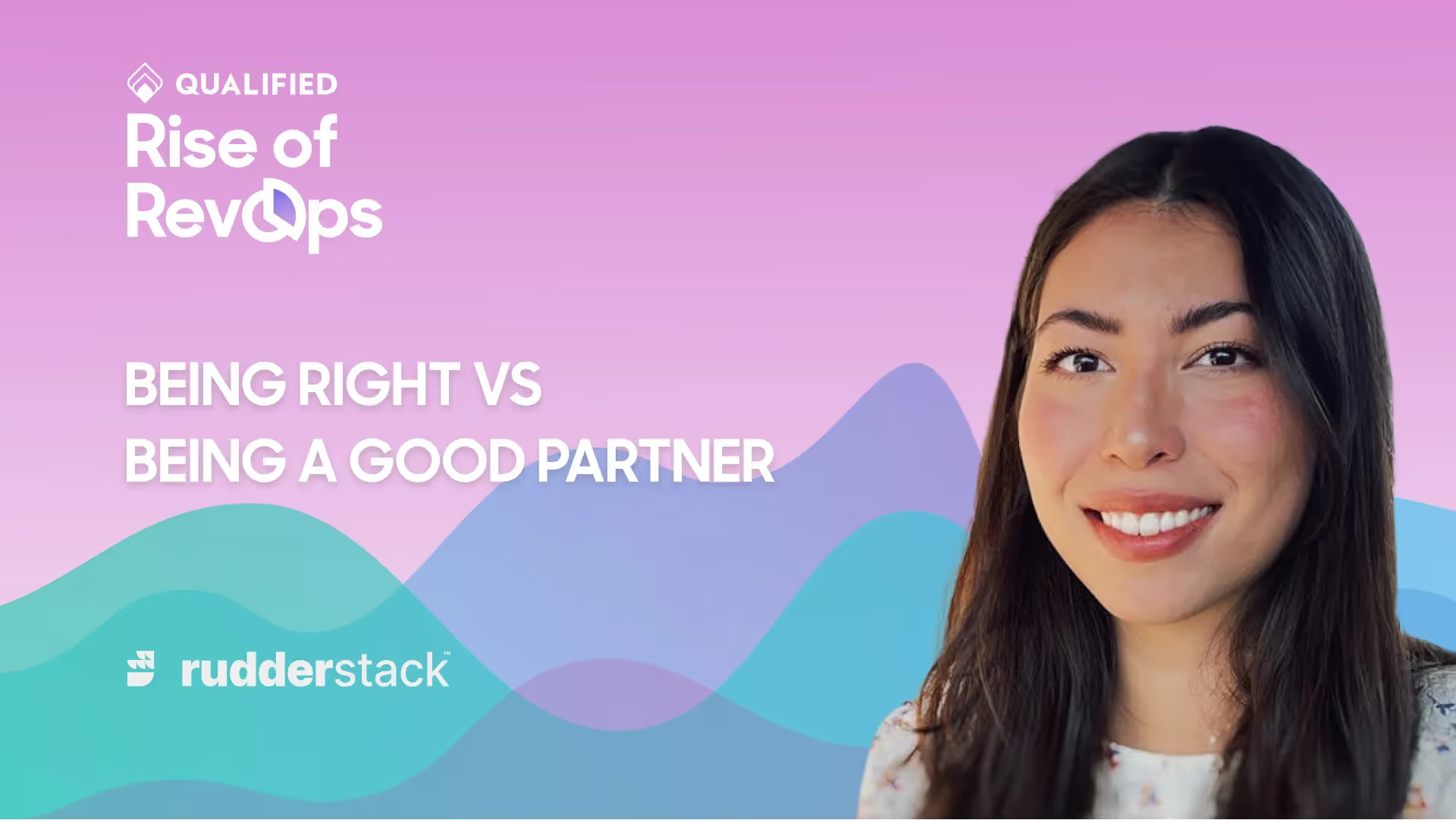Being Right vs Being a Good Partner
On this episode, Renee discusses the importance of knowing the key players in your organization, going from zero to one in a tech start-up, and being right vs being a good partner.




On this episode, Renee discusses the importance of knowing the key players in your organization, going from zero to one in a tech start-up, and being right vs being a good partner.

This episode features an interview with Renee Psenka, Head of Revenue Operations at RudderStack. As the leading open source Customer Data Platform, Rudderstack provides data pipelines that make it easy to collect data from every application, website and SaaS platform, then activates it in your warehouse and business tools. Before joining the team at Rudderstack as Head of Revenue Operations, Renee worked in Sales Operations at Bolt, and as a Business Architect at Cisco. Renee has a degree in Business Administration and Management from the University of North Carolina at Chapel Hill.
On this episode, Renee discusses the importance of knowing the key players in your organization, going from zero to one in a tech start-up, and being right vs being a good partner.
Key Takeaways
Stay up to date with weekly drops of fresh B2B marketing and sales content.
On this episode, Renee discusses the importance of knowing the key players in your organization, going from zero to one in a tech start-up, and being right vs being a good partner.


This episode features an interview with Renee Psenka, Head of Revenue Operations at RudderStack. As the leading open source Customer Data Platform, Rudderstack provides data pipelines that make it easy to collect data from every application, website and SaaS platform, then activates it in your warehouse and business tools. Before joining the team at Rudderstack as Head of Revenue Operations, Renee worked in Sales Operations at Bolt, and as a Business Architect at Cisco. Renee has a degree in Business Administration and Management from the University of North Carolina at Chapel Hill.
On this episode, Renee discusses the importance of knowing the key players in your organization, going from zero to one in a tech start-up, and being right vs being a good partner.
Key Takeaways
Stay up to date with weekly drops of fresh B2B marketing and sales content.
On this episode, Renee discusses the importance of knowing the key players in your organization, going from zero to one in a tech start-up, and being right vs being a good partner.


This episode features an interview with Renee Psenka, Head of Revenue Operations at RudderStack. As the leading open source Customer Data Platform, Rudderstack provides data pipelines that make it easy to collect data from every application, website and SaaS platform, then activates it in your warehouse and business tools. Before joining the team at Rudderstack as Head of Revenue Operations, Renee worked in Sales Operations at Bolt, and as a Business Architect at Cisco. Renee has a degree in Business Administration and Management from the University of North Carolina at Chapel Hill.
On this episode, Renee discusses the importance of knowing the key players in your organization, going from zero to one in a tech start-up, and being right vs being a good partner.
Key Takeaways
Stay up to date with weekly drops of fresh B2B marketing and sales content.
On this episode, Renee discusses the importance of knowing the key players in your organization, going from zero to one in a tech start-up, and being right vs being a good partner.



This episode features an interview with Renee Psenka, Head of Revenue Operations at RudderStack. As the leading open source Customer Data Platform, Rudderstack provides data pipelines that make it easy to collect data from every application, website and SaaS platform, then activates it in your warehouse and business tools. Before joining the team at Rudderstack as Head of Revenue Operations, Renee worked in Sales Operations at Bolt, and as a Business Architect at Cisco. Renee has a degree in Business Administration and Management from the University of North Carolina at Chapel Hill.
On this episode, Renee discusses the importance of knowing the key players in your organization, going from zero to one in a tech start-up, and being right vs being a good partner.
Key Takeaways
Discover how we can help you convert more prospects into pipeline–right from your website.